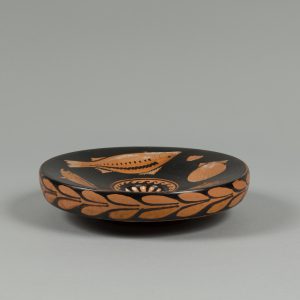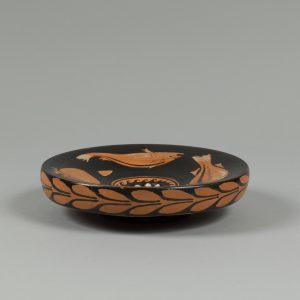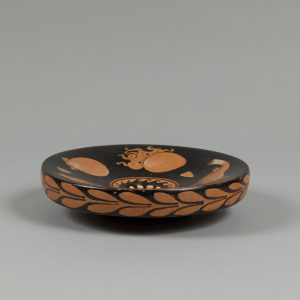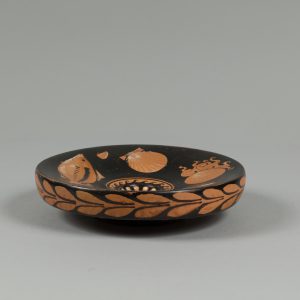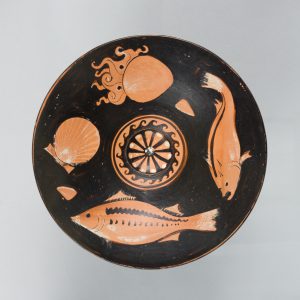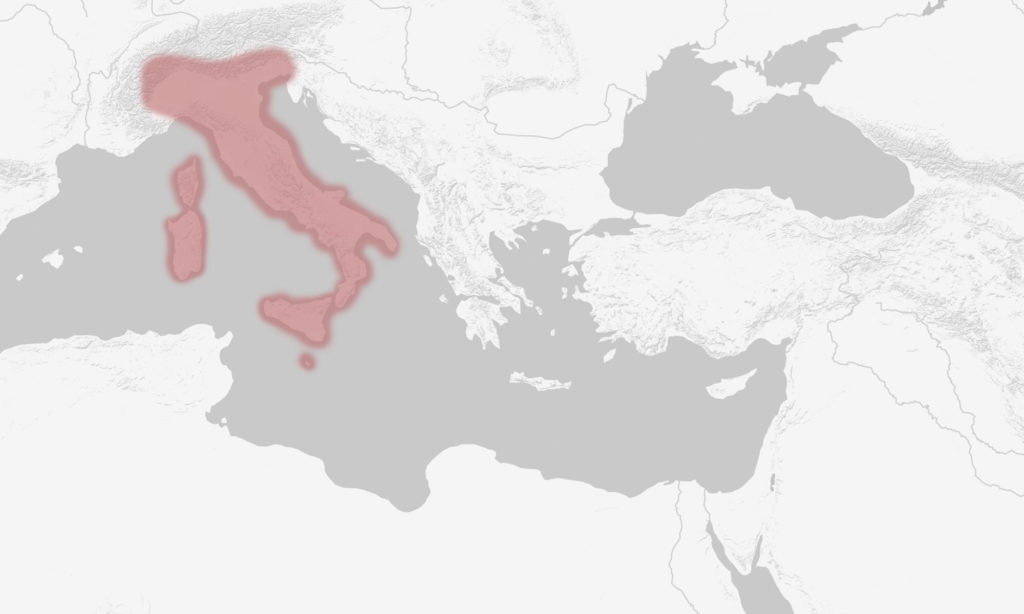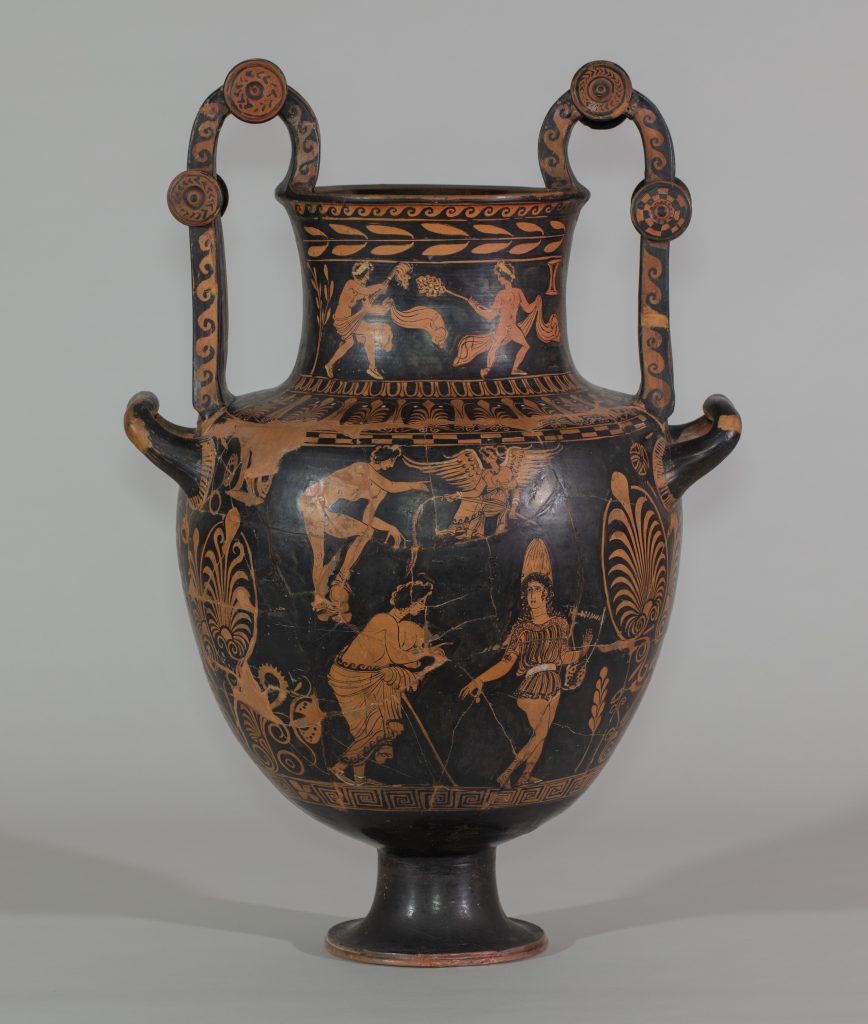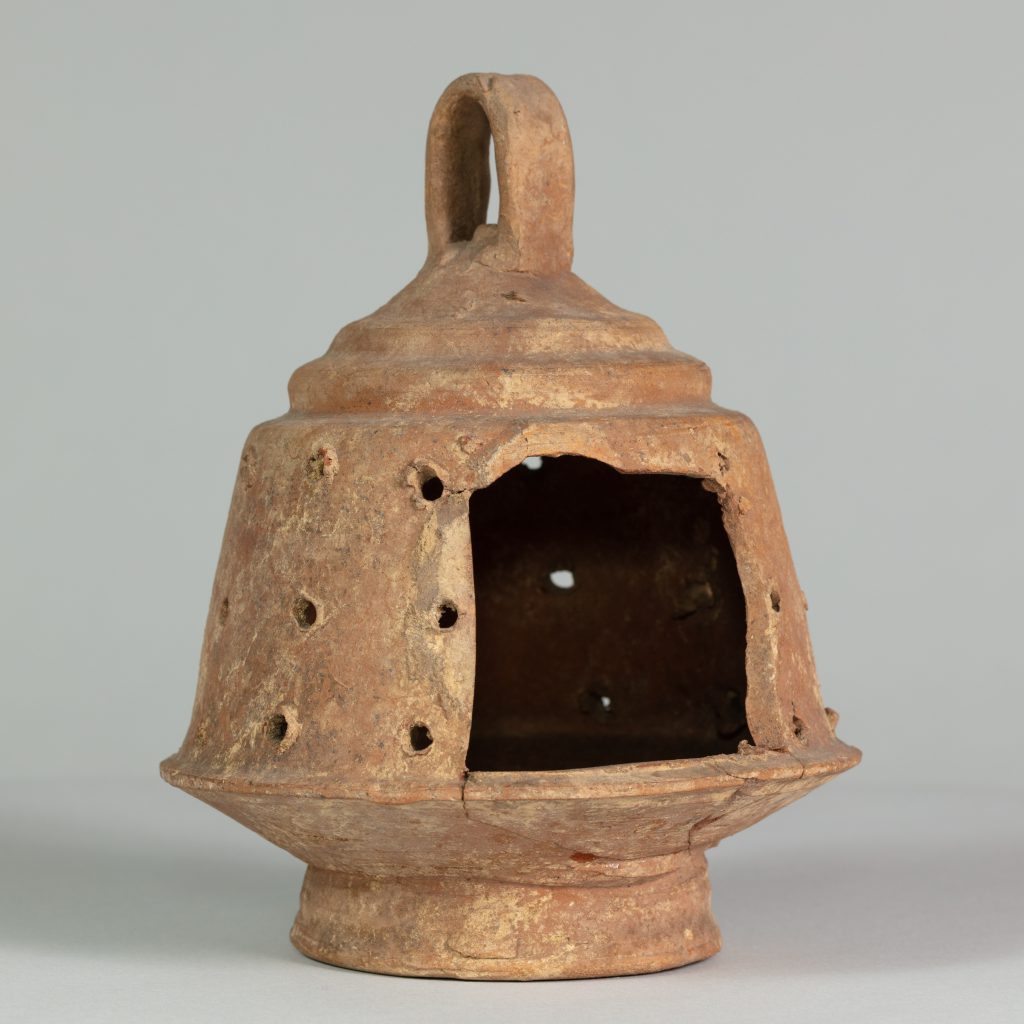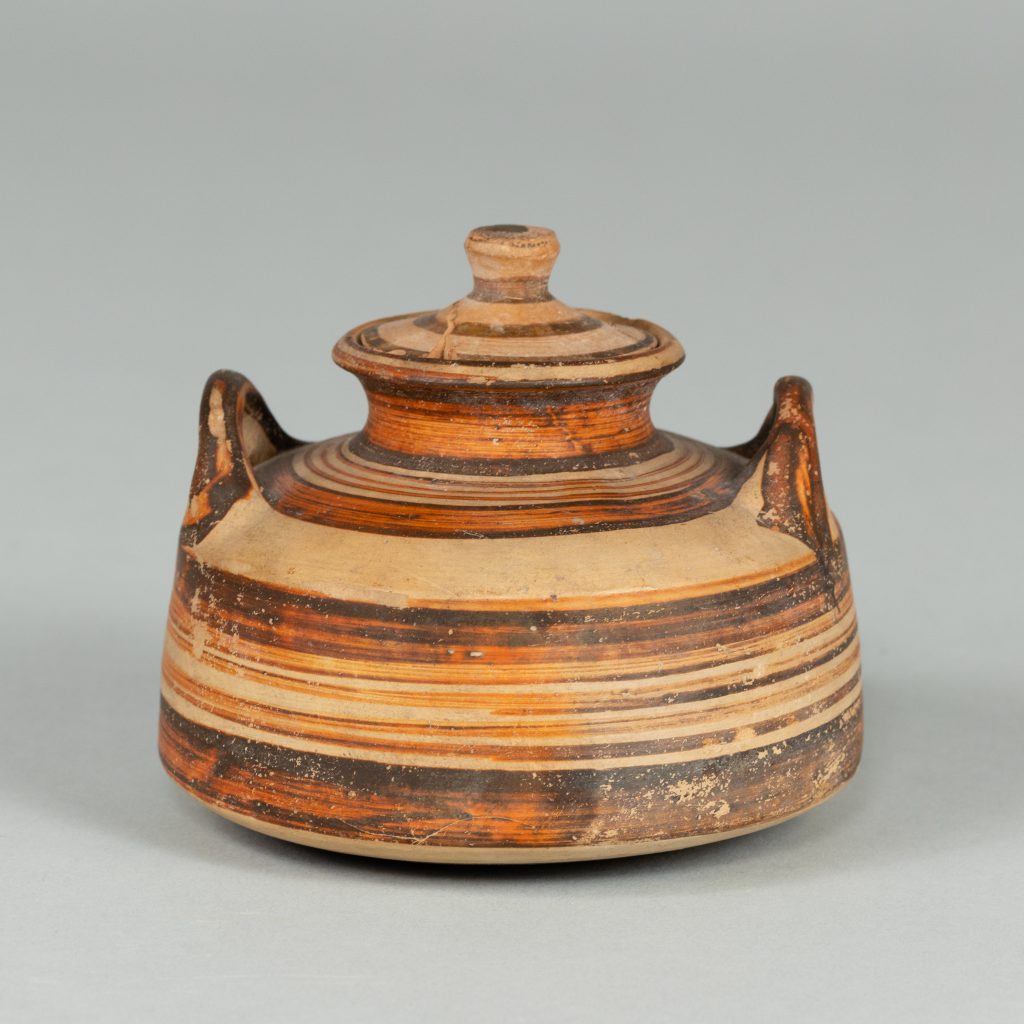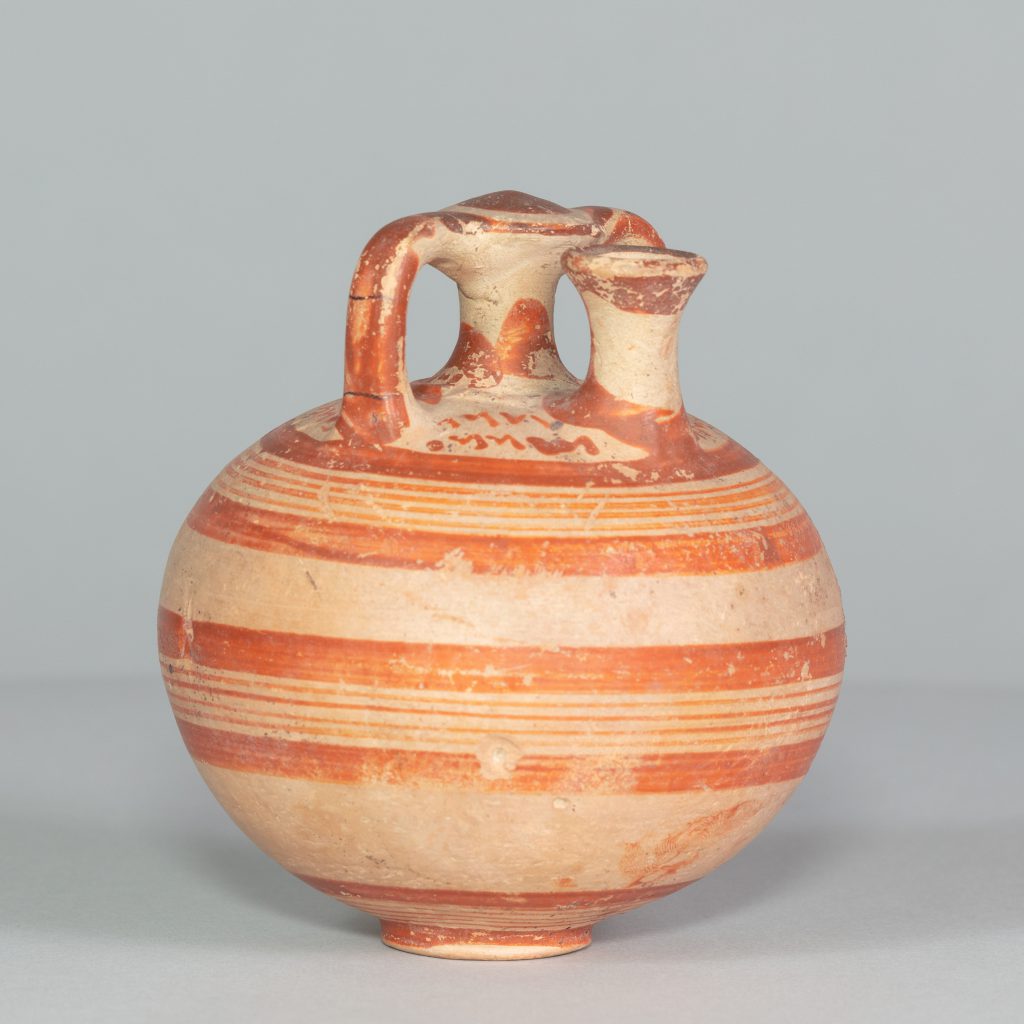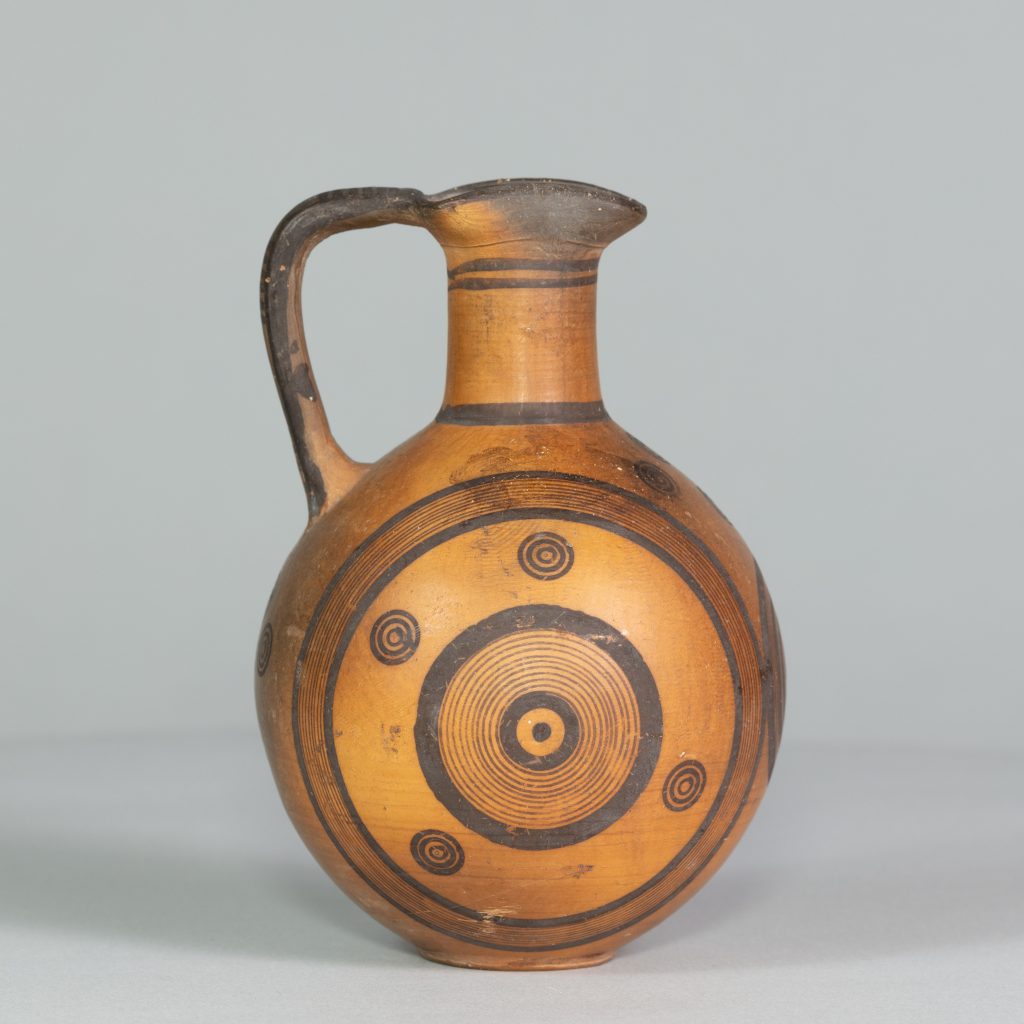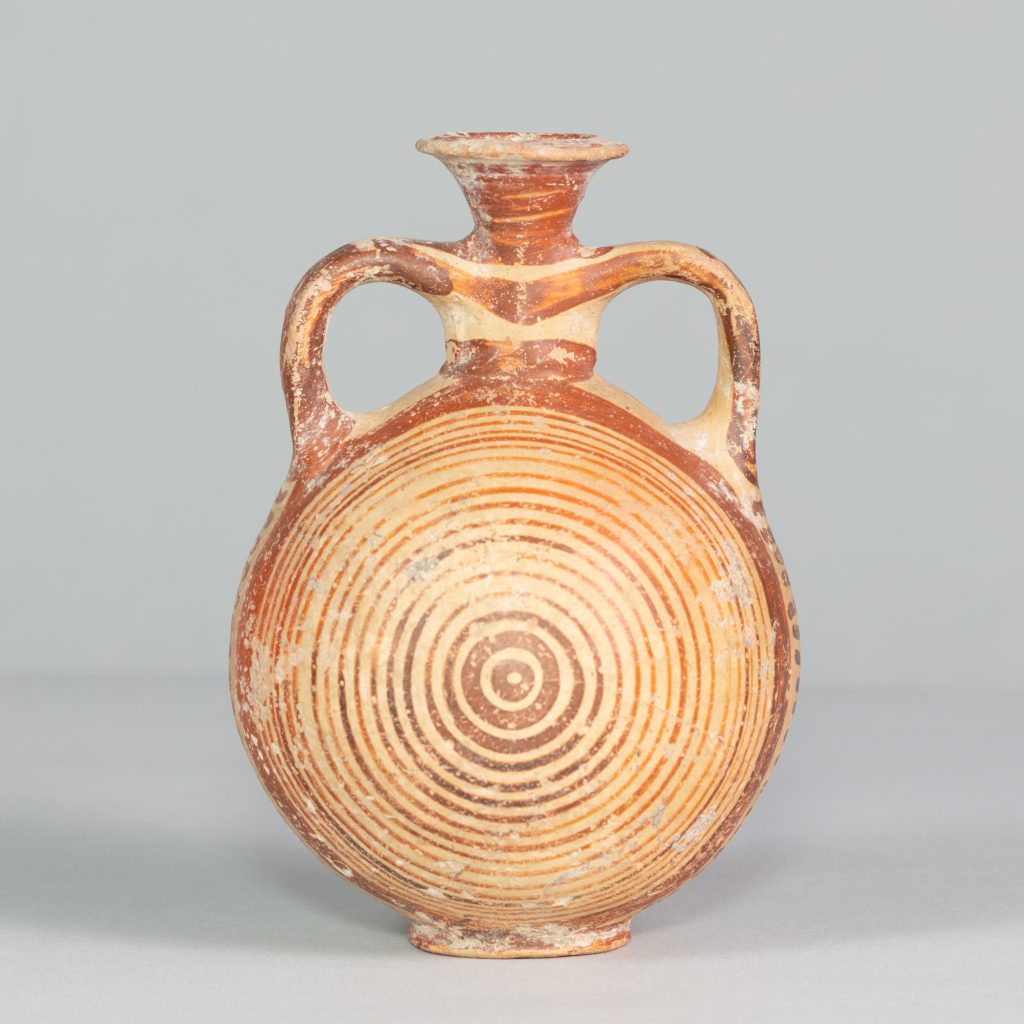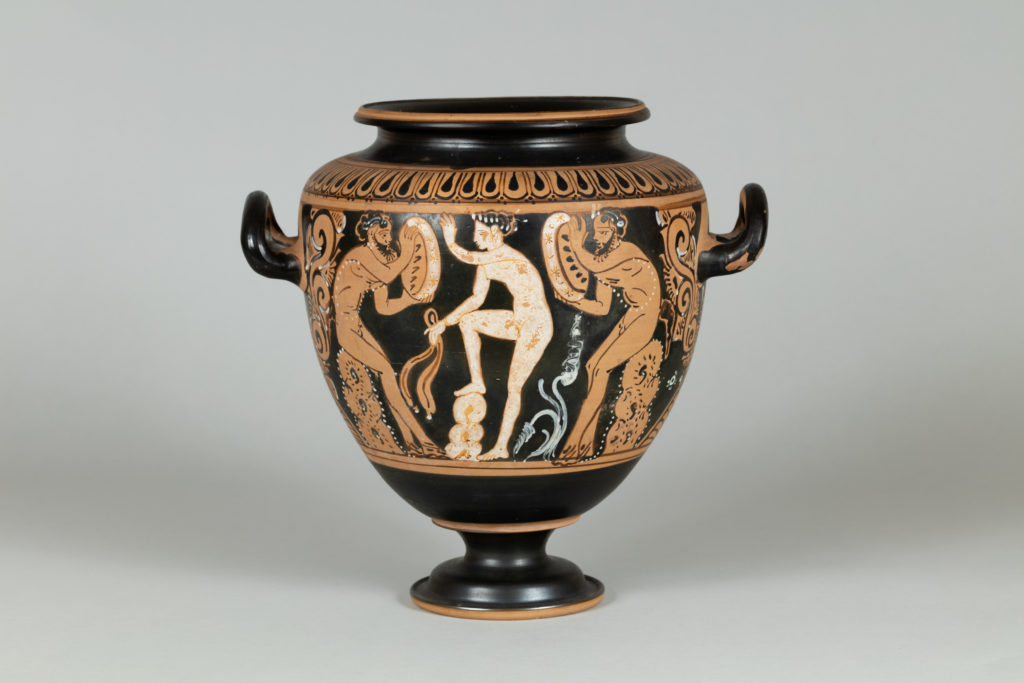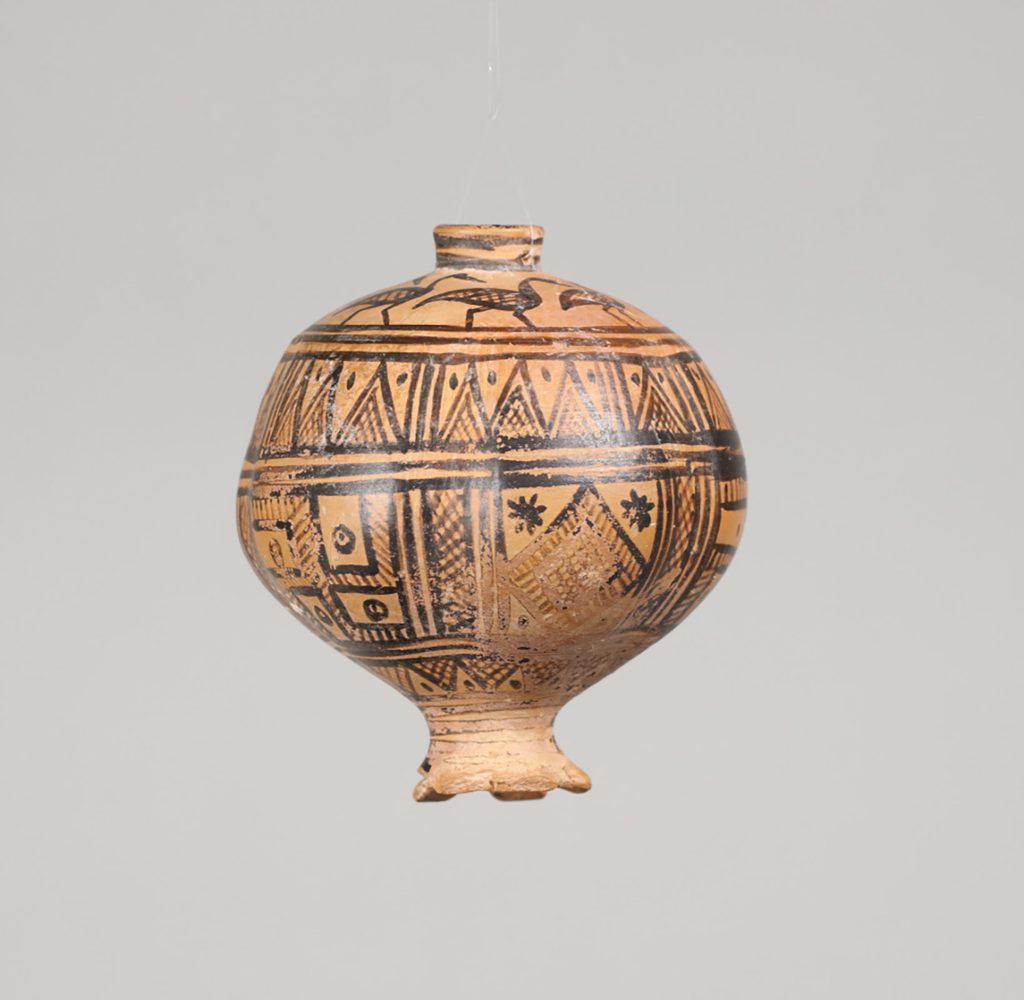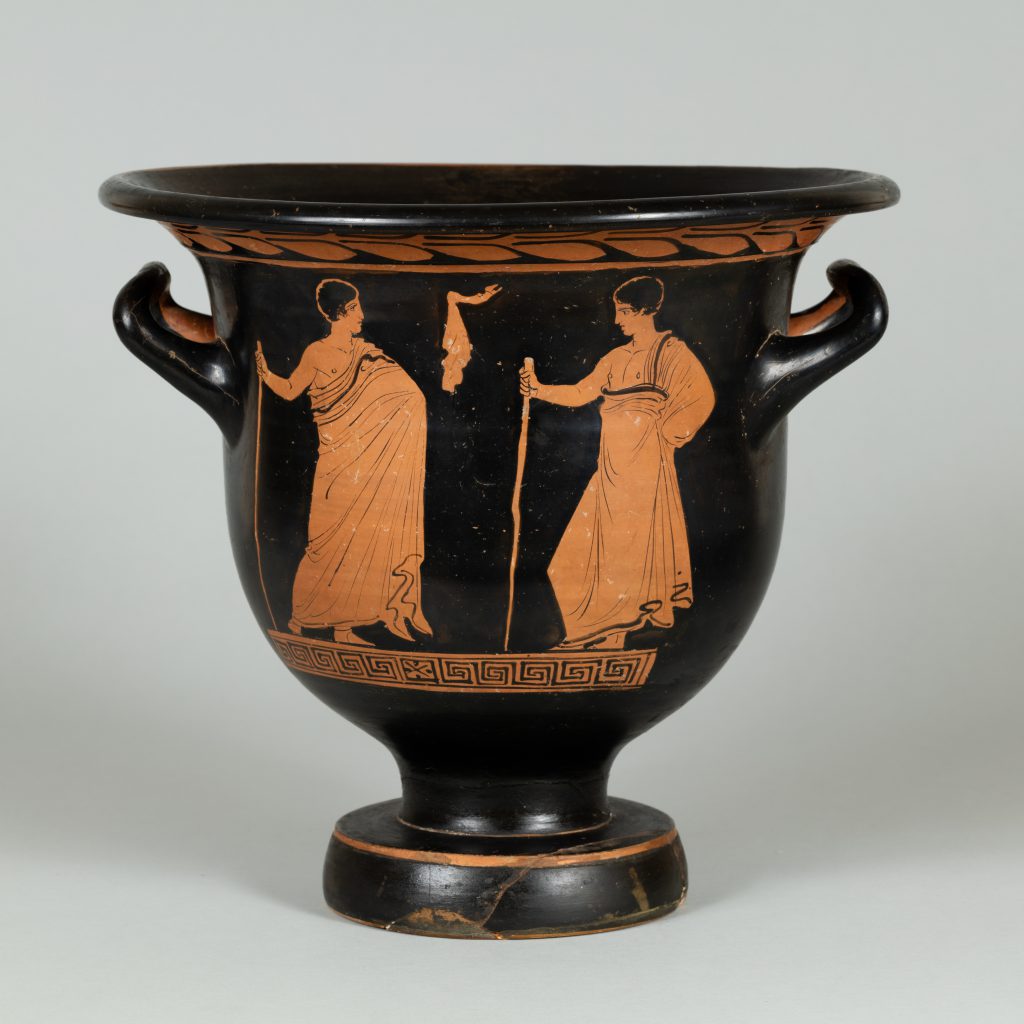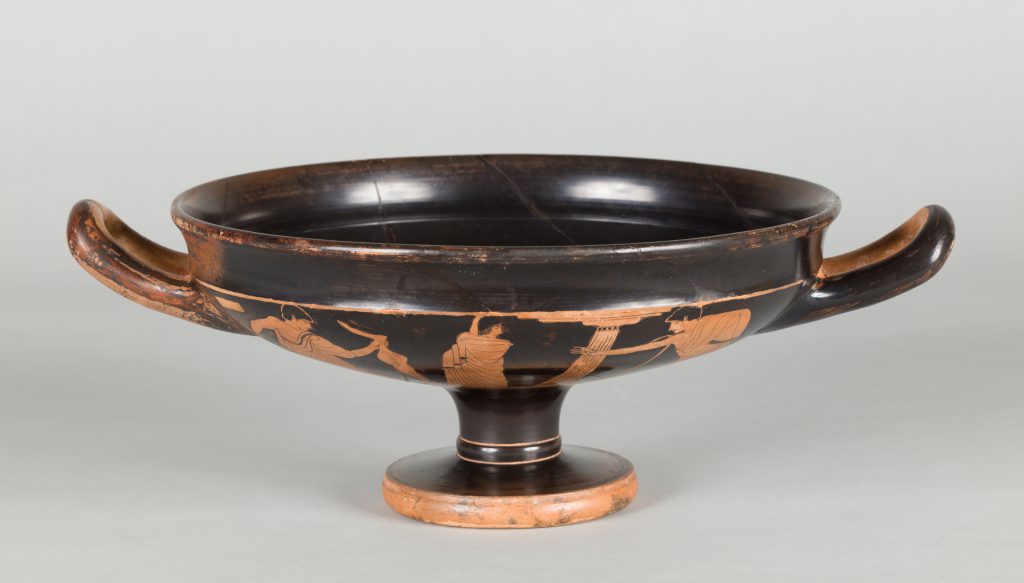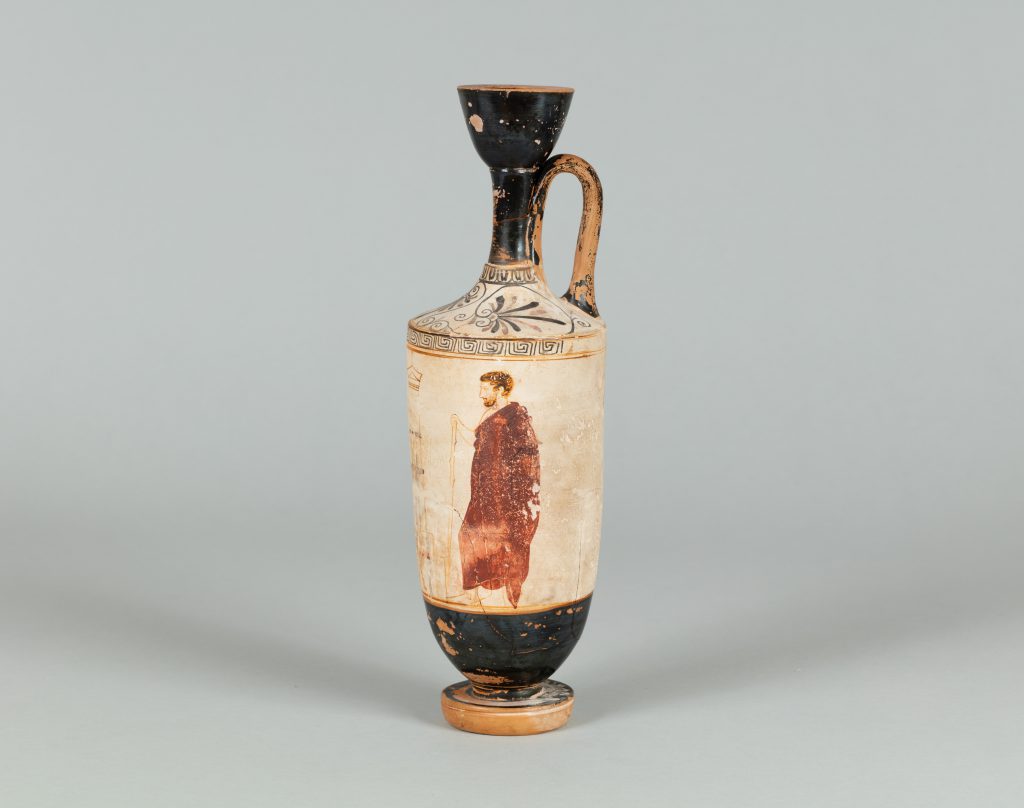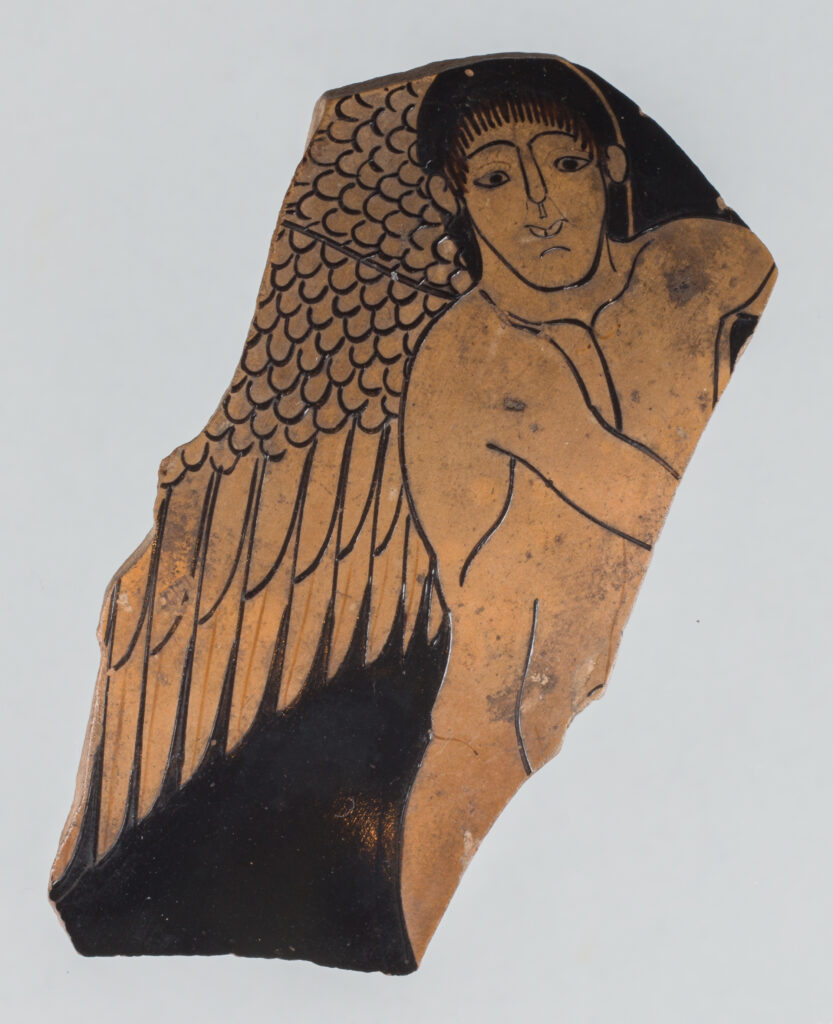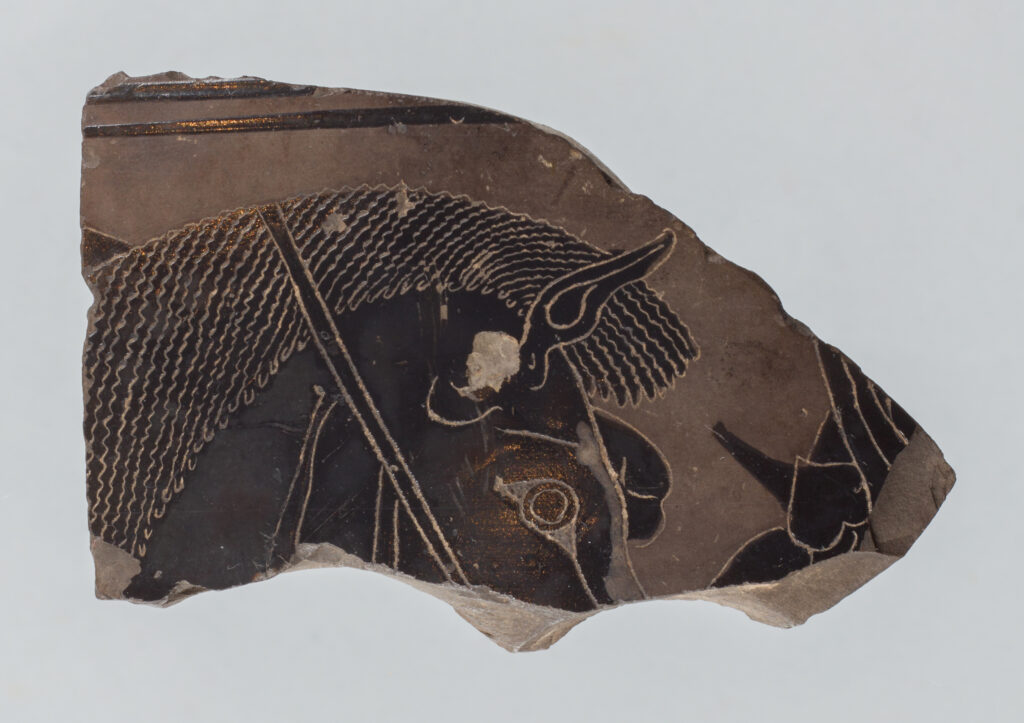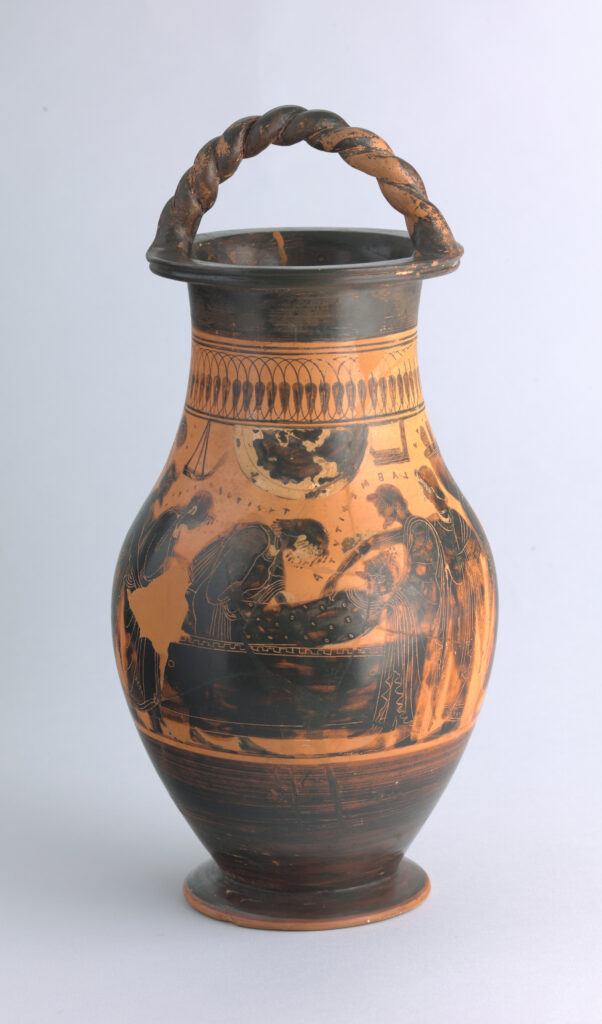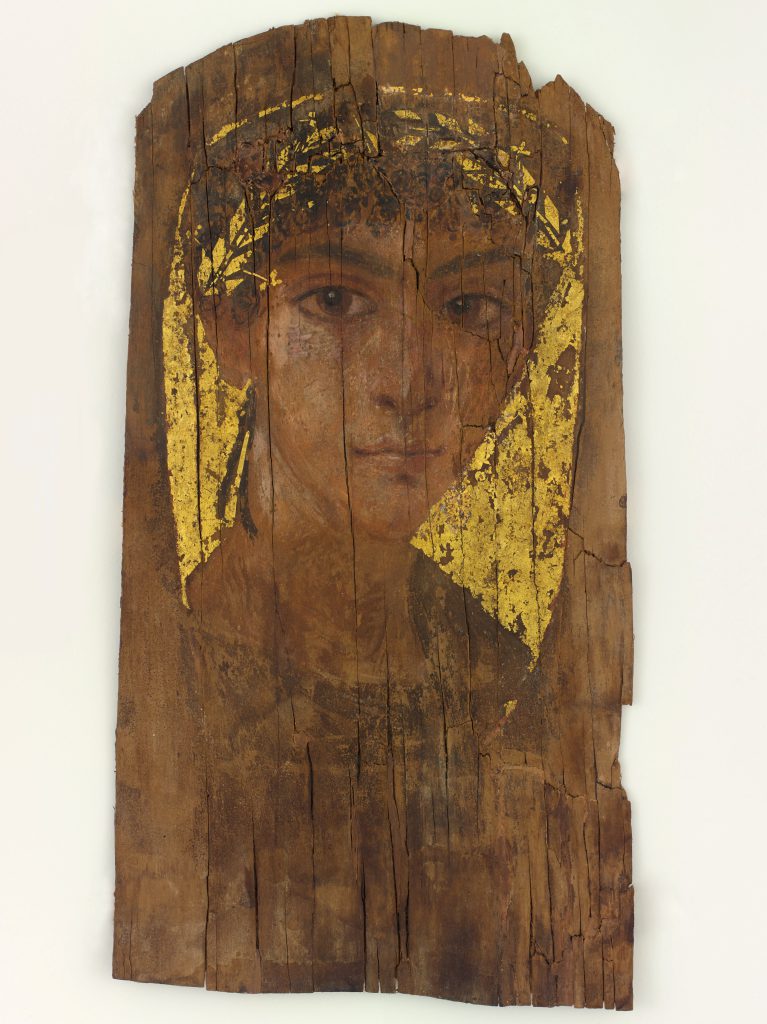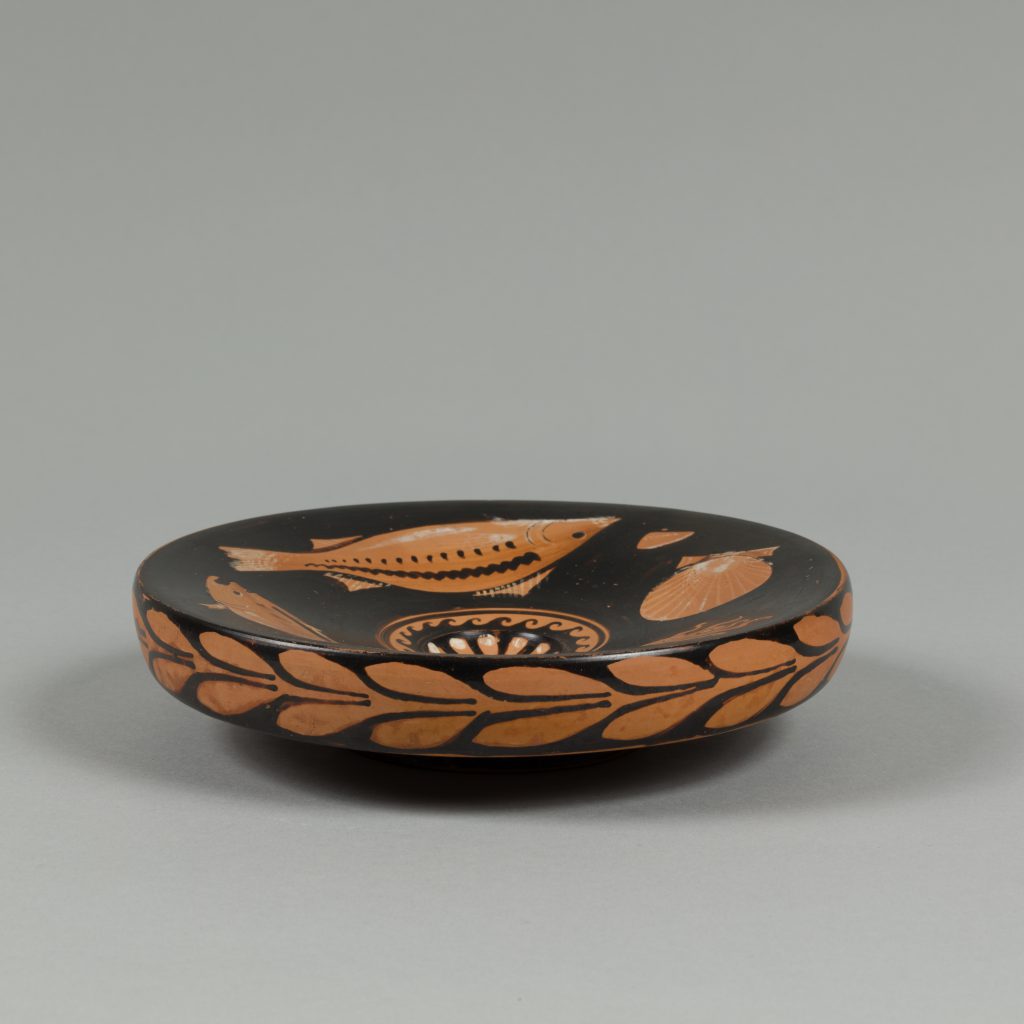

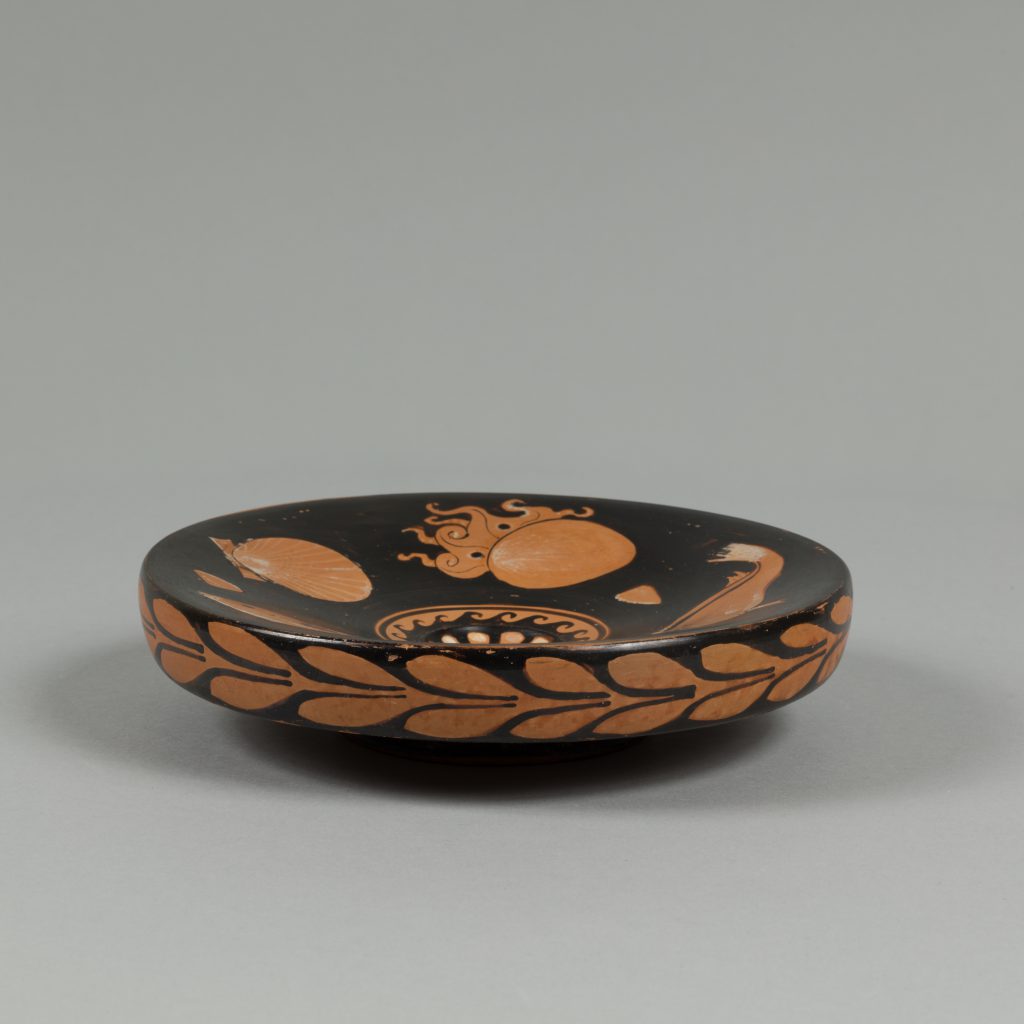

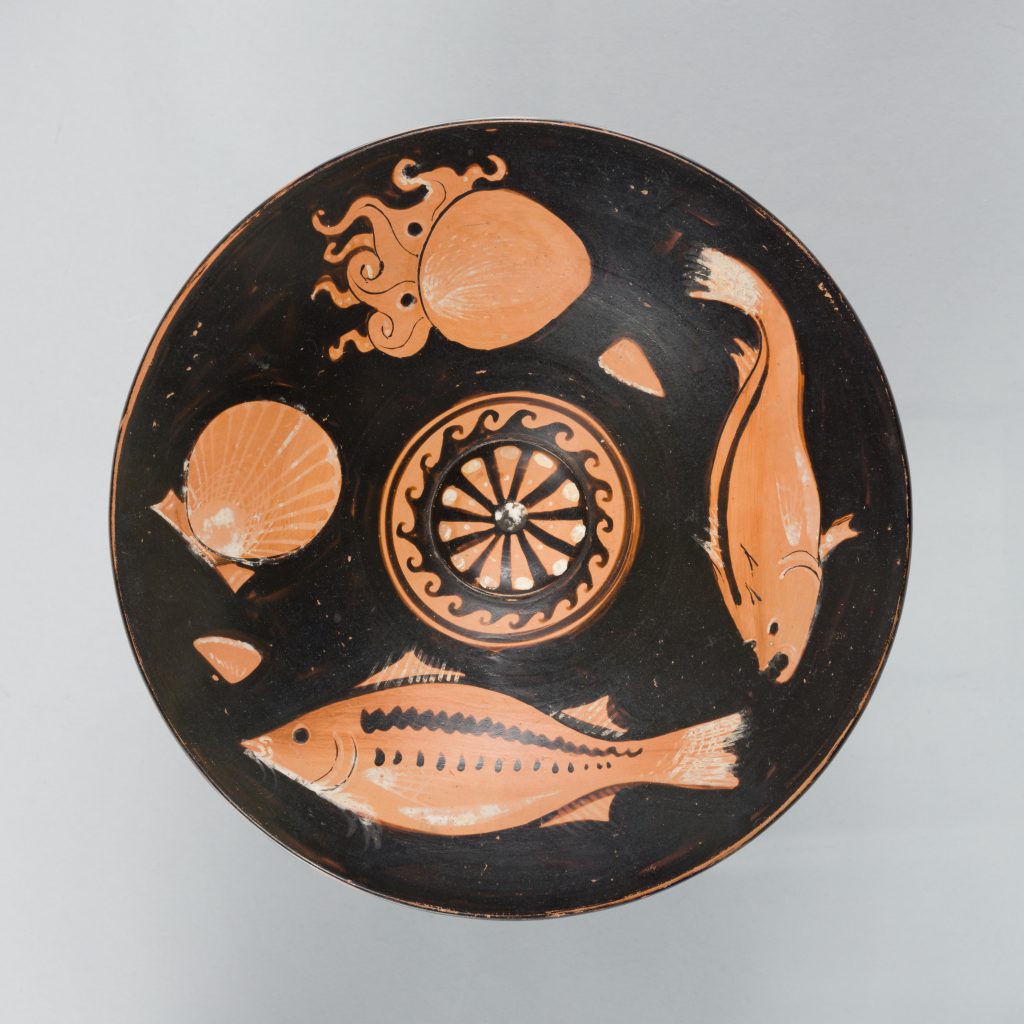
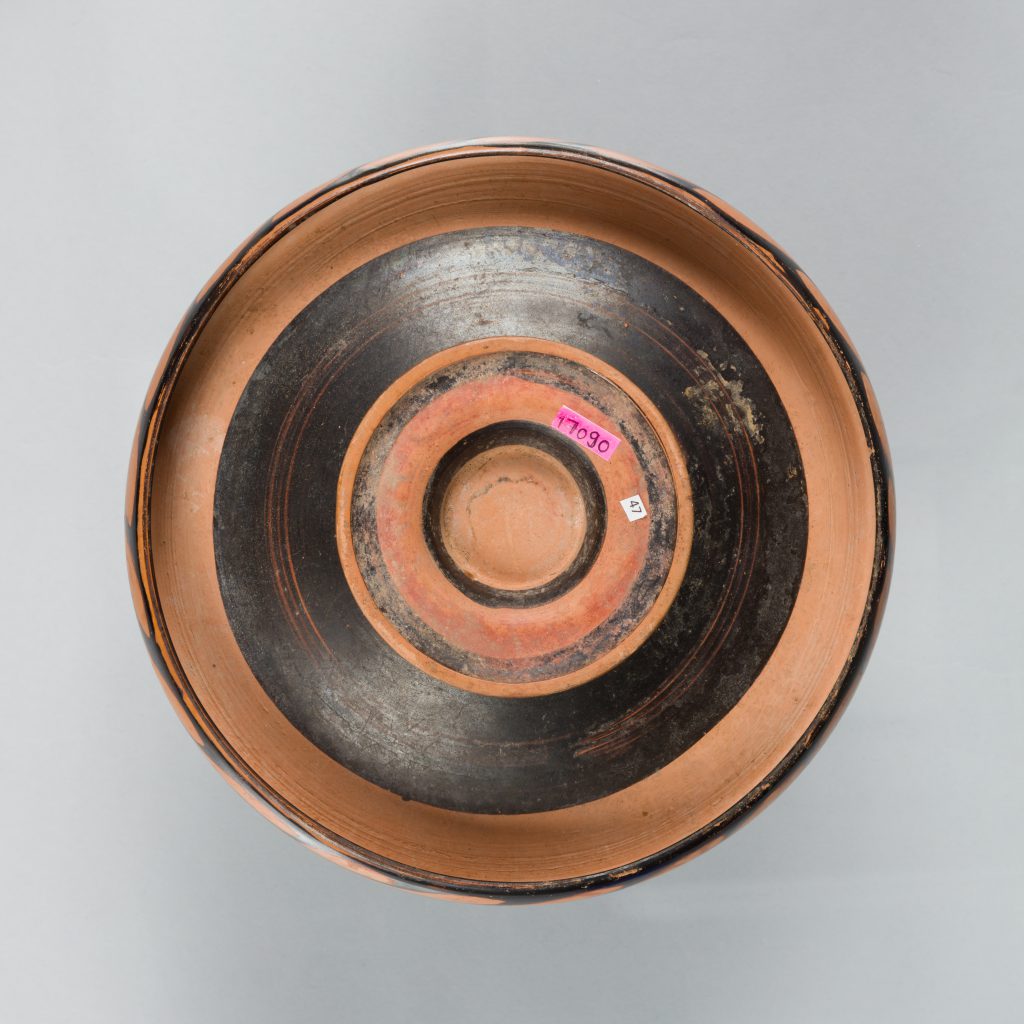
Museum purchase, Adela Wood Smith Trust
2018.1Red-figure fish plates are one of the most distinctive forms of ancient Greek ceramics. Like many Greek vessels, their decorations are directly related to their intended function: the serving of seafood at the Greek dinner table. The gently sloping floor between the rim and the central concavity provides the circular canvas for the detailed illustrations depicting the maritime species that were the dietary staple for much of the Mediterranean world. This fish plate is decorated with an octopus, a monkfish, a shi drum fish, a scallop shell, and two mussels.
The fish appear to be swimming in a wine-dark sea with the body of the lophius (monk fish) bending naturally as if in water. This impression is enhanced by the dark waves that surround the depression in which juices would have pooled and fish sauce would have been served. Fish plates were particularly popular among the Greek colonies of Magna Graecia in southern Italy, and over one thousand examples have been discovered in the region.
Between 1802–10, acquired in Naples; after 1811, acquired by Claude Annet Jullien (1788–1873) and passed by descent to Amédeé Jullien (1819–1887), Geneva; between 1887–2015, by descent; between 2015–2017, acquired by representatives of Rupert Wace Ancient Art Ltd., London; 2017, purchased by the Bowdoin College Museum of Art from Rupert Wace with funds from the Adela Wood Smith Trust, Brunswick.
